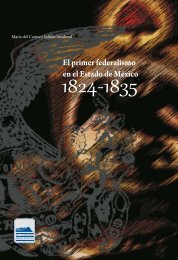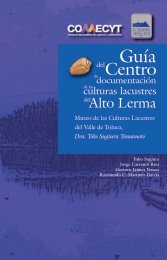Create successful ePaper yourself
Turn your PDF publications into a flip-book with our unique Google optimized e-Paper software.
KEVIN M. CHRISMAN, WORKING AT SANBORNS: GENDER, PATERNALISM AND UNION MOVEMENT (1920-1948)<br />
trolled union and felt vulnerable under the<br />
company’s paternalistic labor system.<br />
On October 23, 1947, the secretary general<br />
of the UEHCRS visited the office of the<br />
Central Conciliation and Arbitration Board<br />
and presented a strike action against Sanborns<br />
Monterrey. The document provided a<br />
list of demands by workers that needed to<br />
be met before a planned strike set for October<br />
30, 1947. They demanded that Sanborns<br />
accept the terms of a new collective<br />
bargaining agreement. The petition also<br />
stipulated that Sanborns needed to “harmonize”<br />
the interests of the company with<br />
its workers and offer solidarity with other<br />
unions on strike. The union argued that Sanborn<br />
offered “meager” salaries to its employees<br />
compared to similar restaurants in<br />
Monterrey, and that the salaries were insufficient<br />
to cover expenses for wage earners<br />
and their families. According to the document,<br />
wages of the workers should reflect<br />
the high economic potential of the company.<br />
The union pointed to the company’s<br />
“enormous profits” and “the fame enjoyed<br />
by the commercial position” as a popular<br />
tourist destination. These profits may have<br />
benefited Sanborns owners the success<br />
but did not reflect the real earnings of the<br />
workers (AGENL, JLCA, 1947e). The document<br />
presented to the arbitration board<br />
suggests Sanborns workers recognized that<br />
their U.S.-owned employer underpaid them<br />
compared with other companies operating<br />
in Monterrey. Significantly, many of the demands<br />
listed were exactly what Alejandra<br />
Molina argued for during her arbitration<br />
case a few years earlier, including paid holiday<br />
time off, paid lunch breaks, and labor<br />
protection against unjust suspensions or<br />
separation from their positions.<br />
News of the strike vote caught Sanborns<br />
management off guard, and the company<br />
appeared unaware that a group of women<br />
workers had joined an independent union.<br />
Company lawyers decried the demands for<br />
a wage increase as “illegal and absurd” and<br />
presented as evidence to the arbitration<br />
board the collective bargaining agreement<br />
signed by workers the year prior. Lawyers<br />
also produced a list of signatures by seventy<br />
Sanborns workers in the ranks of the<br />
company controlled UESM. The statement<br />
indicated these employees found it “truly<br />
surprising” that an outside union was planning<br />
a strike since none of them authorized<br />
the motion (AGENL, JLCA, 1947f). The evidence<br />
would suggest the majority of Sanborns<br />
Monterrey employees remained loyal<br />
to the company union and were against the<br />
strike.<br />
The labor movement against Sanborns<br />
set off a chain of events that exposed the<br />
company’s fears of having their workforce<br />
join a labor organization operating outside<br />
of company control. Tensions between the<br />
outside union and Sanborns management<br />
ran high leading up to the proposed strike<br />
date. On October 28 th , 1947, a labor inspector<br />
wrote the arbitration board reporting on<br />
worker fears of retaliation and punishment.<br />
The inspector warned of evidence suggesting<br />
the company planned to coerce workers<br />
into voting against the strike. Sanborns<br />
managers had prevented workers “from<br />
acting freely and spontaneously of their<br />
will”. The official recommended the strike<br />
vote be held within the premises of the<br />
Conciliation and Arbitration Board to prevent<br />
Sanborns managers from using scare<br />
tactics to intimidate employees against voting<br />
the wrong way (AGENL, JLCA, 1947g).<br />
Sanborns lawyers insisted the strike vote<br />
should take place in their store, arguing<br />
there was potential risk from outside labor<br />
agitators who might pressure workers into<br />
voting a certain way. Ultimately, the arbitration<br />
board allowed the strike vote to take<br />
place at Sanborns. On the eve of the strike<br />
vote, labor inspectors visited Sanborns and<br />
found the store closed to the public with<br />
company employees locked indoors. The<br />
inspectors were denied entry and reported<br />
that the workers were either “detained”<br />
or kept there for a group meeting. Further<br />
testimony by workers revealed that employees<br />
were locked inside the store as early<br />
as 3:00pm and included workers from the<br />
morning shift (JLCA, AGENL, 1947h). Sanborns<br />
lawyers denied the claim.<br />
192



![bicentenario_1[V2]](https://img.yumpu.com/68677971/1/167x260/bicentenario-1v2.jpg?quality=85)
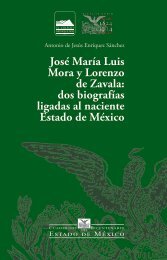
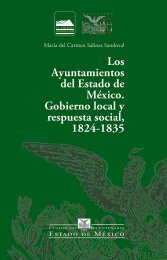

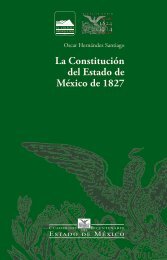
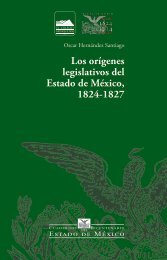
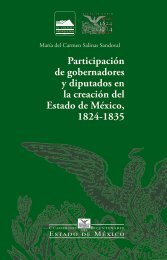
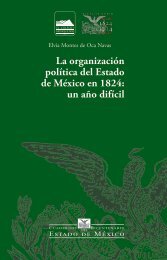
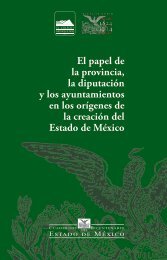

![El_primer_federalismoEM[final]_compressed (2)](https://img.yumpu.com/68483279/1/178x260/el-primer-federalismoemfinal-compressed-2.jpg?quality=85)
